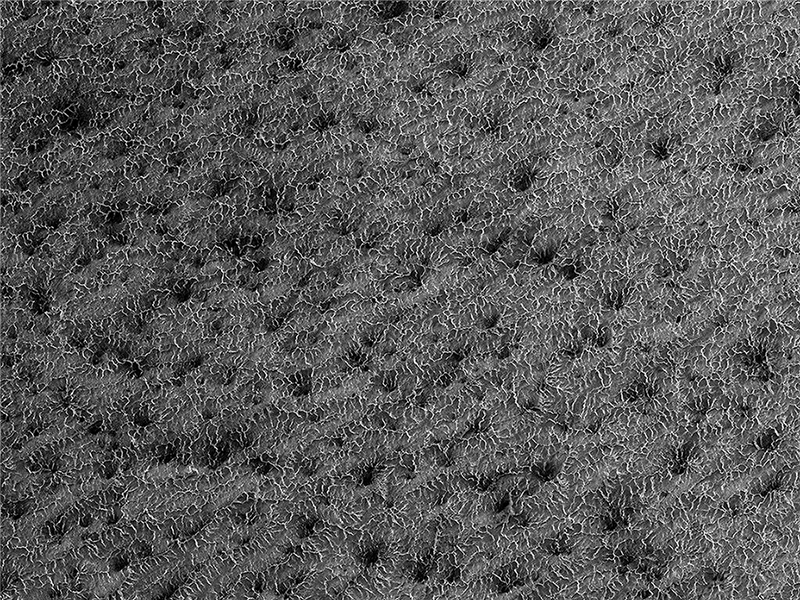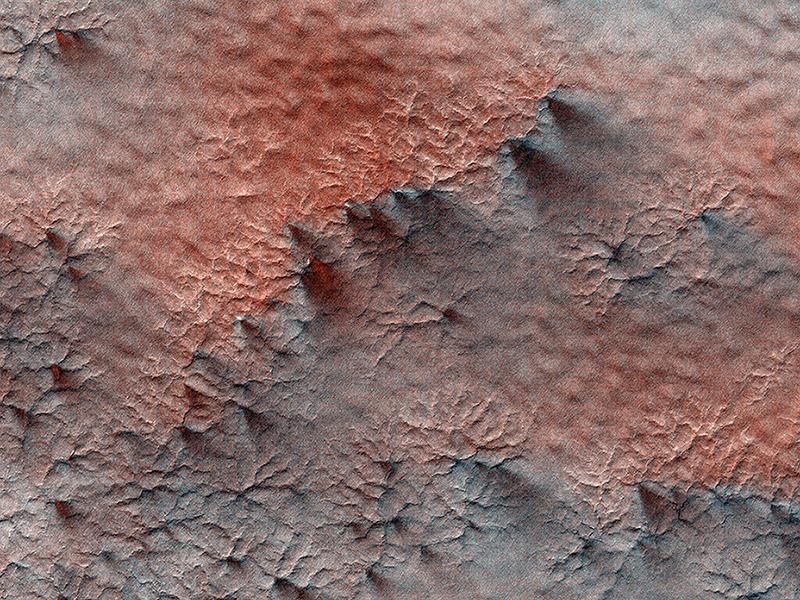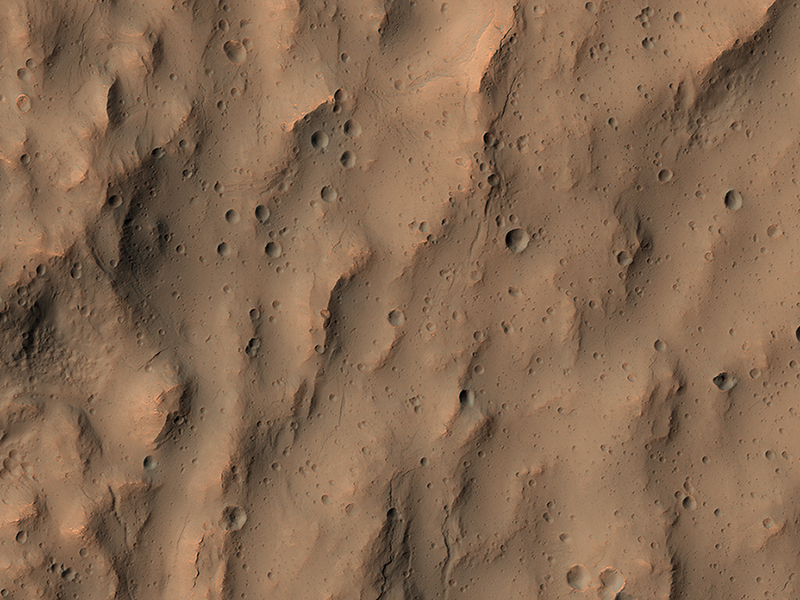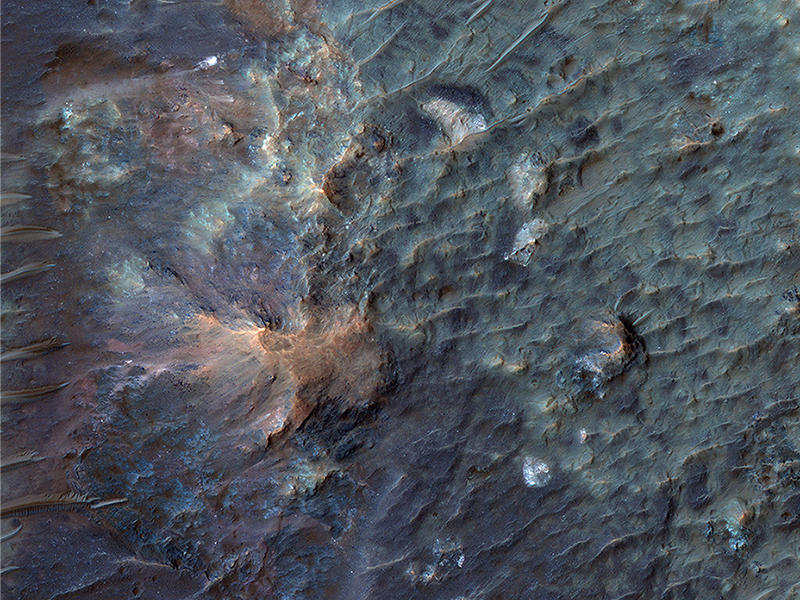Candy Hansen wrote:Lace on Mars (ESP_046414_0990) (HiClip)
Some seasonal ice on Mars is transparent so that the sunlight penetrates to the bottom of the ice. Heat from this sunlight can turn the ice directly into a gas in a process called sublimation and this gas can scour channels in the loose dirt under the ice.
Channels formed by sublimation of a layer of seasonal dry ice are so dense in this area that they look like lace. Gas flow erodes channels as it escapes to the surface of the overlying seasonal ice layer seeking the path of least resistance.
Candy Hansen wrote:Spiders on Mounds (ESP_046562_1005) (HiClip)
This terrain looks like lumpy sediment on top of patterned ground. The lumpy sediment is likely just loosely consolidated because it is covered with spidery channels.
This landform is uniquely Martian, formed in the spring as seasonal dry ice turns directly into gas that erodes channels in the surface.
This target was identified by citizen scientists at Planetfour: Terrains.
Paul Geissler wrote:Secondary Craters (ESP_046876_1465) (HiClip)
This image of a southern mid-latitude crater was intended to investigate the lineated material on the crater floor. At the higher resolution of HiRISE, the image reveals a landscape peppered by small impact craters.
These craters range from about 30 meters in diameter down to the resolution limit (about 2 meter diameter in this image acquired by averaging 2x2 picture elements). Such dense clusters of small craters are frequently formed by secondary craters, caused by the impact of material that was excavated and ejected from the surface of Mars during the creation of a larger nearby crater by the impact of a comet or an asteroid.
Secondary impact craters are both interesting and vexing. They are interesting because they show the trajectories of the material that was ejected from the primary impact with the greatest speeds, typically material from near the surface of the blast zone. Secondary craters are often found along the traces of crater rays, linear features that extend radially from fresh impact craters and can reach many crater diameters in length. Secondary craters can be useful when crater rays are visible and the small craters can be associated with a particular primary impact crater. They can be used to constrain the age of the surface where they fell, since the surface must be older than the impact event. The age of the crater can be approximately estimated from the probability of an impact that produced a crater of such a size within a given area of Mars over a given time period.
But these secondary craters can also be perplexing when no crater rays are preserved and a source crater is not easily identifiable, as is the case here. The impact that formed these secondary craters took place long enough ago that their association with a particular crater has been erased. They do not appear along the trace of a crater ray that is still apparent in visible or thermal infrared observations. These secondary craters complicate the task of estimating the age of the lineated material on the crater floor.
It is necessary to distinguish secondary craters from the primary impacts that we rely upon to estimate the ages of Martian surfaces. The large number of small craters clustered together here is typical of crater rays elsewhere on Mars and suggests that these are indeed, secondary impact craters.
Alfred McEwen wrote:Soffen Crater Floor (ESP_047561_1560) (HiClip)
Dr. Gerald A. Soffen (February 7, 1926 — November 22, 2000) was a project scientist for the NASA’s Viking program of Mars landers. This crater on Mars was named after him, and this image covers a small portion of the crater floor.
Here, we see a diversity of bedrock colors and textures and wind-blown (aeolian) features.
Credit: NASA/JPL-Caltech/University of Arizona
<< Previous HiRISE Update



